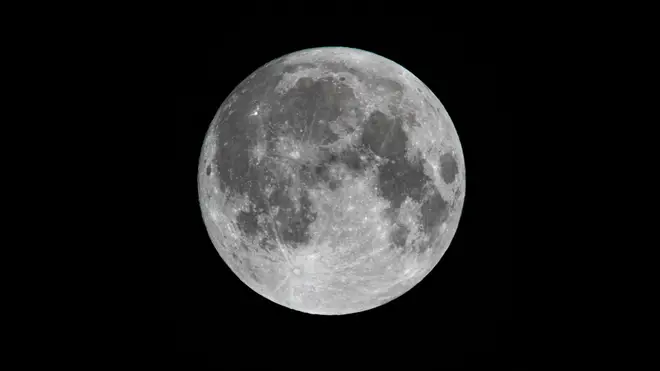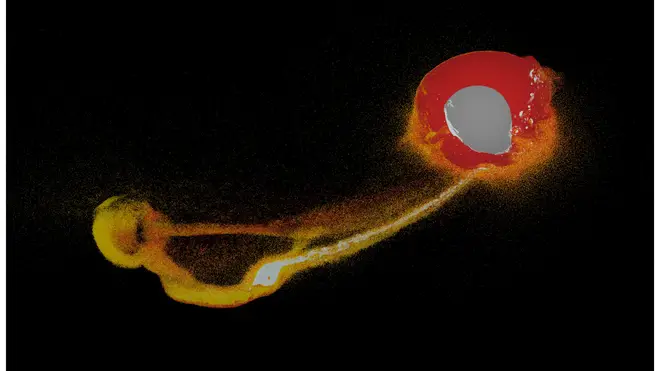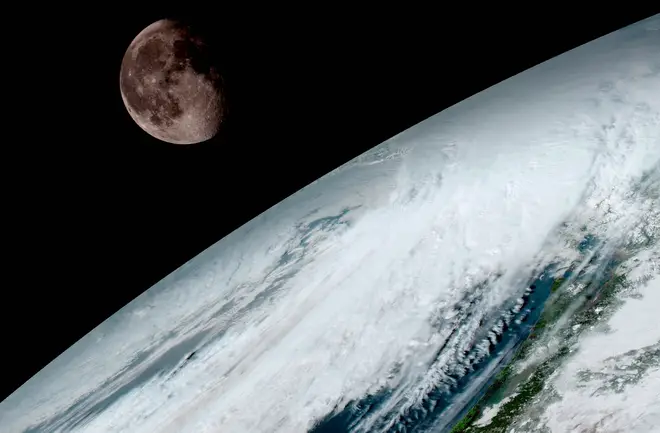
Paul Brand 10am - 12pm
4 December 2020, 01:19 | Updated: 4 December 2020, 01:22

UK scientists say they are one step closer to unveiling the mystery behind the moon's formation 4.5 billion years ago.
Astronomers seeking to explain how the satellite may have been born following a giant collision between the early Earth and another massive object ran supercomputer simulations in an attempt to unlock the mystery.
During the simulation, the researchers, led by Durham University, sent a Mars-sized planet called Theia crashing into a younger version of our celestial home.
The results produced an orbiting body with the potential to evolve into a moon-like object.
Although the group said this is not definitive evidence of the moon's origin, they said the findings were promising for understanding how the satellite was born.
Their observations are published in the Monthly Notices of the Royal Astronomical Society journal.
Read more: Nasa uncovers hidden water on the moon
Read more: China launches mission to bring back material from moon's surface

It is widely accepted in the scientific community that the moon was formed after the Earth collided with the smaller Theia - an ancient planet believed to have existed in the early stages of our solar system.
As part of the simulation, astronomers tracked material from the early Earth and Theia for four days after their collision, before running other tests where Theia was spinning like a pool ball.
Each collision with our home planet produced different results depending upon the size and direction of Theia's initial rotation.
At one extreme, the collision merged the two objects together while at the other there was a grazing hit-and-run impact.
When no spin was added to Theia, a self-gravitating clump of material - with a mass of about 80 per cent of the moon - was produced. Likewise, when a small amount of spin was added another moon-like object was formed.
Read more: UK and Nasa sign deal to get first woman on the moon by 2024
Read more: Giant planet discovered orbiting dead white dwarf star for first time

NASA announce discovery of hidden pockets of frozen water on the moon
In each case, the resulting clump - which settles into an orbit around the post-impact Earth - would grow by using gravity to pull in the resultant debris surrounding our planet.
The scientists also discovered it would have a small iron core, similar to our moon's, with an outer layer of materials made up from the early Earth and Theia.
Lead author Sergio Ruiz-Bonilla, a PhD researcher in Durham University's Institute for Computational Cosmology, said: "By adding different amounts of spin to Theia in simulations, or by having no spin at all, it gives you a whole range of different outcomes for what might have happened when the early Earth was hit by a massive object all those billions of years ago.
"It's exciting that some of our simulations produced this orbiting clump of material that is relatively not much smaller than the moon, with a disc of additional material around the post-impact Earth that would help the clump grow in mass over time.
"I wouldn't say that this is the moon, but it's certainly a very interesting place to continue looking."

Recent analyses of lunar samples collected by the Apollo space missions suggest that a mixture of early Earth and impactor material might have formed the moon.
The high-resolution simulations were run using the SWIFT open-source simulation code.
They were carried out on the DiRAC Memory Intensive service ("COSMA"), hosted by Durham University on behalf of the DiRAC High-Performance Computing facility.